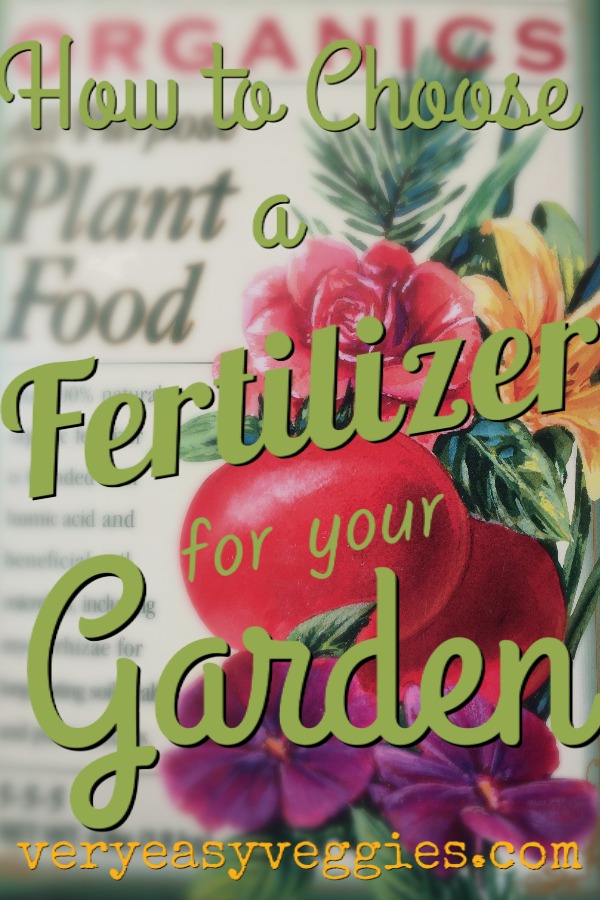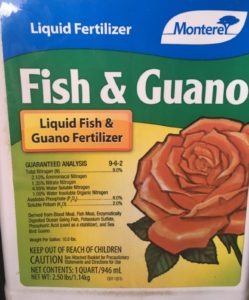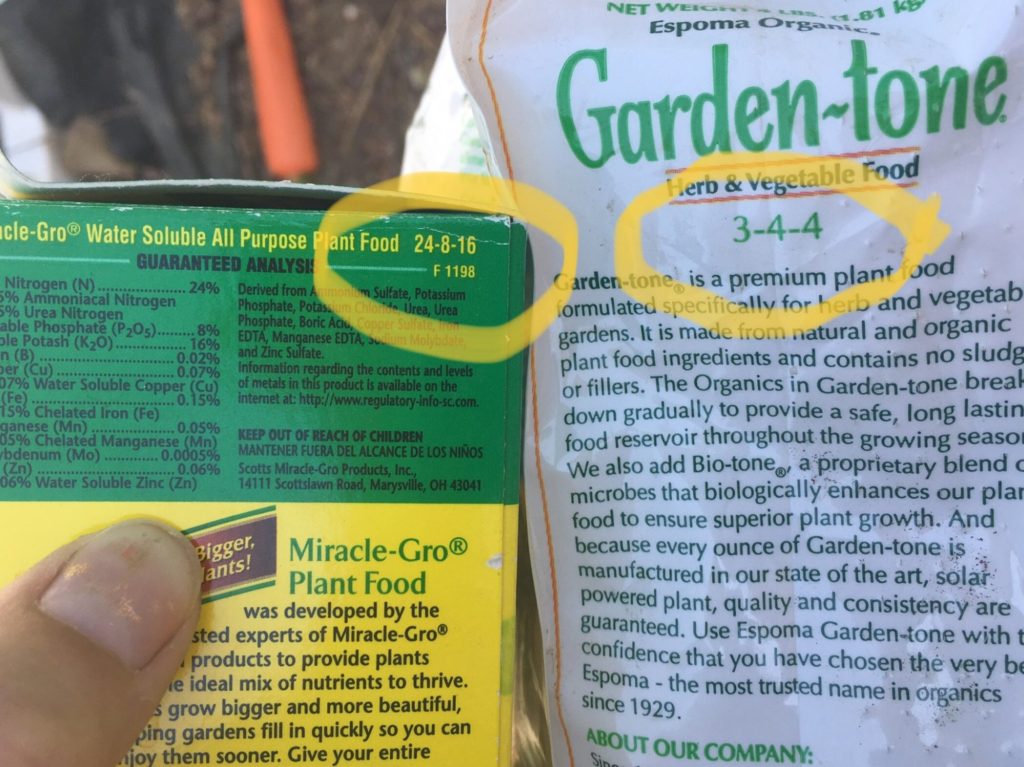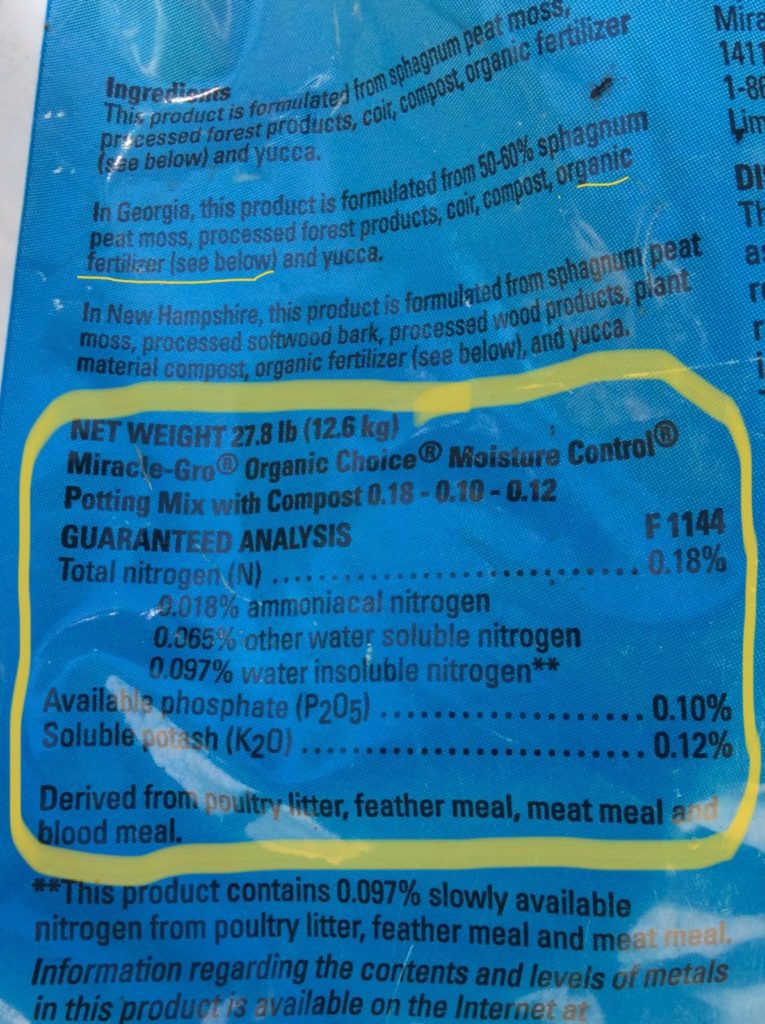How do you choose a fertilizer? Did you know that different types of plants have different fertilizer needs? And that those needs can be different at different times in their life cycle? Don’t worry though, I’ll help you sort out what you need in a few steps.

Want an easy way to save this info for later? Get all these beginner lessons and more in the Very Easy Veggie Garden eBook!
I tend to recommend getting fertilizer from your soil when possible, to make things simpler. This can be as easy as mixing in some compost, or even adding it on top of your soil! (I won’t blame you if you stop reading and just do that). But there are positives to choosing one just for your needs as well.
Organic Fertilizer or Synthetic?
This one is up to your preference. You may wish to use only organic on your veggies, but don’t mind using synthetics on flowers and things that you won’t eat. Personally, I am less worried about using non-organic fertilizers than I am about using chemical pesticides, though.
From a biological perspective, there may not be too much difference in how the plant puts it to use, but sticking with natural or organic will typically do more to improve your soil over time. Synthetic is often faster acting and may produce more dramatic results. (If you’re looking for a faster-acting organic fertilizer, try one that contains seaweed).
Synthetic fertilizer (like standard miracle gro) is more likely to shock or burn your plants if you don’t apply it right, but organic products usually will not. Depending on their ingredients, natural products may be more stinky or gross looking (at least liquid varieties) but not always.

Liquid Fertilizer or Dry?
If you have not yet planted, mixing dry fertilizer into your soil is not too much trouble. This helps it dissolve better and helps the plant absorb it more evenly. But once the plants are growing, it is often more effective and less disturbing to roots to use a liquid application. Dry organic fertilizer usually has to be “watered in” to the soil after application (sometimes mixed with a hand rake also).
Be sure to read the label for application and dilution instructions. This is especially important for synthetic fertilizers, to avoid your plants getting stressed, shocked, or burned. Liquid fertilizers are usually concentrated, and even some granular fertilizers (usually synthetics like miracle gro) should be dissolved in water first.
This organic based liquid fertilizer from Home Depot is my personal favorite for almost any use, even if its a little gross looking.
NPK: What do the 3 numbers mean?
Scanning the store aisle, you may notice that many fertilizers are marked for different purposes–flowers, roses, trees, vegetables, or all purpose. These labels help, but looking at the fertilizer numbers will give you an even better idea of what they’re designed for.
Any package of fertilizer (or soils containing fertilizer) should have three numbers separated by dashes, or in the form of a chart, as in these photos. This is known as the NPK Ratio.


The first number stands for nitrogen (N), which is the nutrient behind green, leafy growth. You will notice this number is always highest for lawn fertilizers. Nitrogen is obviously important, especially as plants are starting out. But too much nitrogen later in the season can leave you with large, lush plants and not much harvest.
The second or middle number represents the percentage of phosphorus (P). This is responsible for root growth and the production of flowers and strong fruit/vegetables.
The third number is for potassium or potash (K). This nutrient helps keep plants healthy and free of disease, and strong in the face of temperature extremes. It may be a bit lower since many soils contain it already.
get the Very Easy Veggie Garden eBookWhich NPK ratios to choose
Unless you’ve tested your soil to know what it needs, it is usually best to keep the numbers pretty balanced. If you are aiming to increase green leafy growth and overall size (for leafy greens or herbs), opt for higher nitrogen (first number). If your plants are already big, green, and healthy but don’t have flowers or fruit, choose a fertilizer with a higher middle number.
Many gardeners apply fertilizer twice during the season–a balanced or higher nitrogen fertilizer during first planting, when the plants need to put on lots of leafy growth, and a fertilizer with a higher middle number when it is time for them to put on fruits and flowers.
This can also be done by mixing dry granular fertilizer with a higher middle number into the soil before planting (where it will be slowly broken down and reached by roots as they grow) and topping off the new plant with a higher-nitrogen liquid feed which will be absorbed first.
Or, you can use a relatively balanced fertilizer at both times, once at first and then again later if needed. Some gardeners even use smaller doses of balanced fertilizer more frequently throughout the whole season. This is a good strategy especially if you’re growing veggies in pots or containers.
Azomite rock dust (in the affiliate link above) is said to work almost like a fertilizer. It contains trace minerals to make your vegetables healthier–the plants themselves, and presumably the veggies they produce would be more nutritious as well! I have not tried it yet but am excited to do so this year. This would be in addition to regular fertilizing and feeding, not instead.
Did you know you can buy garden soil that has fertilizer already mixed in for you? Check out “my simple garden setup” for more info. Adding compost is always a great option to feed your plants also!
For extra in-depth information about fertilizers, try this article from sunset.
It was interesting to learn that a liquid fertilizer is really useful for plants that are already growing. My sister is getting into gardening and has been wondering about what kinds of fertilizer to use. I’ll be sure to let her know that once she’s got some plants growing to use the liquid stuff.
Great! It’s not an absolute rule, but it’s easier in my opinion and it often works faster too.